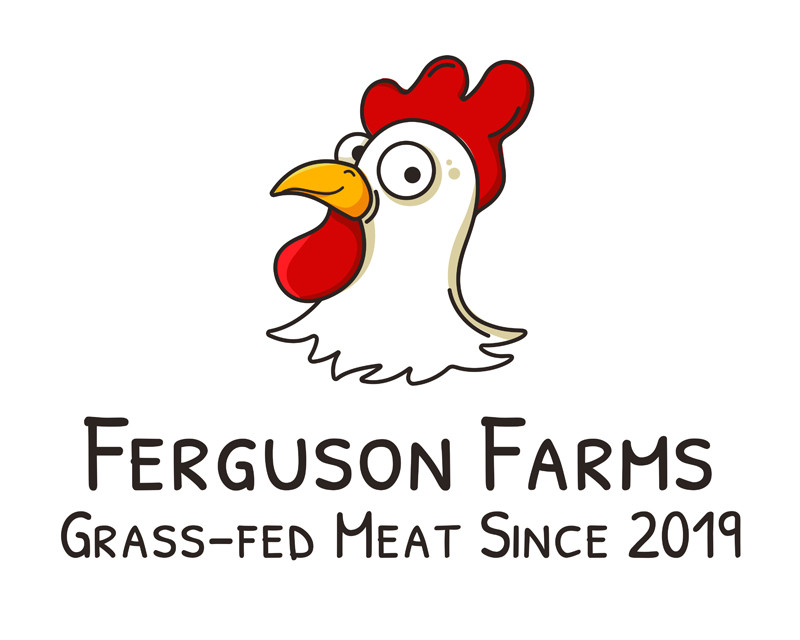Grass-Fed vs. Grass-Finished
posted on
October 1, 2024
Grass-Fed vs. Grass-Finished Beef | Ferguson Farms
Grass-Fed vs. Grass-Finished: What’s the Difference?

When it comes to choosing the best beef, the terms grass-fed and grass-finished often create confusion. Both terms describe cattle that have consumed grass at some point in their lives, but the key difference lies in how they are finished—or fed in the final stages of their life. At Ferguson Farms, we pride ourselves on providing beef that is both grass-fed and grass-finished, offering the highest quality meat for our customers. In this blog, we’ll clarify the differences between grass-fed and grass-finished beef, and why it matters when selecting meat for your health and the environment.
1. What is Grass-Fed Beef?
Grass-fed beef refers to cattle that have consumed grass or forage for a portion of their lives. In many cases, cattle are raised on pasture and allowed to graze on grass for most of their early life. However, the label grass-fed can be misleading, as some cattle are “finished” on grains during the final stages of their lives to speed up weight gain and produce more marbled beef. This process is common in CAFOs (Concentrated Animal Feeding Operations), where cattle are moved off pasture and fed grain to fatten up quickly.
Key Characteristics of Grass-Fed Beef:
- Initial Diet of Grass: Cattle are raised on pasture and eat grass for a portion of their lives.
- Grain-Finishing: Some grass-fed cattle are transitioned to grain-based diets in feedlots, leading to more marbling in the meat.
- Less Stringent Labeling: The term “grass-fed” does not guarantee that the cattle ate grass their entire life, so it’s important to look for more specific labels like “grass-finished.”
2. What is Grass-Finished Beef?
Grass-finished beef refers to cattle that have eaten nothing but grass or forage for their entire lives. These animals are never fed grains, even in the finishing stage, which results in leaner meat with a distinctive, robust flavor. At Ferguson Farms, all of our beef is grass-finished, meaning our cattle spend their entire lives grazing on nutrient-rich pastures.
Key Characteristics of Grass-Finished Beef:
- Entire Life on Grass: From birth to harvest, cattle eat a diet consisting solely of grass and forage.
- Leaner Meat: Grass-finished beef has a lower fat content and is leaner than grain-finished beef, making it a healthier option.
- Rich Flavor Profile: The meat has a more earthy, complex flavor compared to grain-finished beef due to the natural diet.
For more information on how grass-finished beef compares to grain-fed beef, check out our Guide to Grass-Fed Beef.
3. Health Benefits: Why Grass-Finished is Better
While both grass-fed and grass-finished beef are healthier than conventional grain-fed beef, grass-finished beef offers even greater health benefits due to its natural, consistent diet.
Higher Omega-3 Fatty Acids
Grass-finished beef contains more omega-3 fatty acids than beef finished on grains. Omega-3s are essential for heart health, reducing inflammation, and supporting brain function. Grain-fed beef, by contrast, is higher in omega-6 fatty acids, which can promote inflammation when consumed in excess.
Higher in CLA and Antioxidants
CLA (Conjugated Linoleic Acid), a healthy fat found in higher concentrations in grass-finished beef, has been linked to reduced body fat and improved immune function. Additionally, grass-finished beef is rich in antioxidants like vitamin E and beta-carotene, which help protect your body from oxidative stress.
Leaner Meat
Grass-finished beef tends to be leaner than both grass-fed and grain-fed beef. This means fewer calories and less saturated fat, making it a healthier option for those watching their fat intake.
For more on the nutritional differences, check out our post on Grass-Fed vs. Corn-Fed Beef.
4. Environmental Impact: The Grass-Finished Advantage
The environmental benefits of grass-finished beef are significant, especially when compared to cattle that are grain-finished in feedlots.
Sustainable Grazing Practices
At Ferguson Farms, our grass-finished cattle are raised using rotational grazing practices. This method allows livestock to graze on different sections of pasture in cycles, preventing overgrazing and promoting plant regrowth. The benefits include improved soil health, enhanced biodiversity, and carbon sequestration—making grass-finished systems more sustainable than grain-fed feedlots.
Reduced Carbon Footprint
By maintaining cattle on pasture throughout their lives, grass-finished beef helps reduce the carbon footprint of beef production. In contrast, the grain production required for feedlot cattle involves the use of fossil fuels, water, and synthetic fertilizers, contributing to deforestation and greenhouse gas emissions.
To learn more about how grass-finished systems support environmental health, visit our blog on Sustainable Farming Practices.
5. Animal Welfare: The Grass-Finished Promise

The way cattle are raised directly affects their well-being. Grass-finished cattle experience less stress, live in more sanitary conditions, and are free to roam in their natural environment for their entire lives.
Free from CAFOs
Unlike grain-fed cattle that are often confined to CAFOs, where overcrowding and unsanitary conditions are common, grass-finished cattle spend their entire lives outdoors. This allows them to graze freely, which reduces stress and promotes better overall health.
No Need for Antibiotics or Hormones
Because grass-finished cattle live in natural, low-stress environments, they are less likely to develop the illnesses that often plague animals in feedlots. As a result, there is no need for antibiotics or growth hormones, ensuring a cleaner and more ethical product.
To explore more about our commitment to ethical farming, check out our blog on Ethically Sourced Meat.
6. The Taste Difference: Grass-Fed vs. Grass-Finished
The diet of cattle not only affects the nutritional value of the meat but also its flavor. Grass-finished beef has a distinctive, bold taste that many consumers prefer.
Robust and Earthy Flavor
Because grass-finished cattle eat only grass and forage, the meat has a more earthy, complex flavor compared to grain-finished beef. The leaner texture may also require different cooking techniques, such as slow cooking or grilling at lower temperatures, to ensure tenderness.
For tips on how to cook grass-finished beef to perfection, check out our recipe page.
Conclusion: Why Grass-Finished is the Better Choice
When it comes to choosing between grass-fed and grass-finished beef, the latter offers superior health benefits, environmental sustainability, and ethical farming practices. While both grass-fed and grass-finished beef are healthier than grain-fed alternatives, grass-finished beef stands out for its leaner, more nutrient-dense meat and its positive impact on the environment and animal welfare.
At Ferguson Farms, we are proud to offer 100% grass-finished beef, raised in a way that aligns with our commitment to sustainable and ethical farming. Make the switch to grass-finished beef today and taste the difference for yourself.
For more information, explore our blogs on Sustainable Farming Practices and Ethically Sourced Meat.




